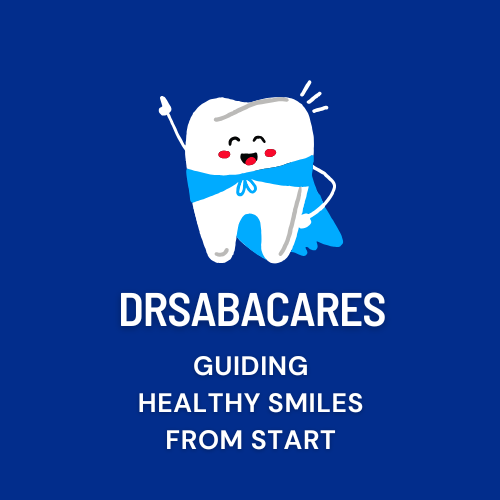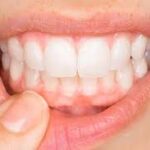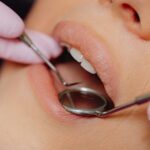Maintaining optimal oral hygiene is crucial for adults, not just for a radiant smile but also for overall health. Proper brushing, flossing, and the judicious use of mouthwash are foundational practices that can prevent dental issues and contribute to systemic well-being.
🪥 Brushing: Technique Matters
Brushing twice daily with fluoride toothpaste is essential. We as dentist always follow the Modified Bass method of brushing .The Bass brushing technique, also known as the sulcular brushing method, is a highly recommended method for adults aiming to enhance gum health and prevent periodontal diseases. Developed by Dr. Charles C. Bass.This technique focuses on effectively removing plaque from the gumline and just beneath it, areas commonly missed by standard brushing methods .
What is Bass method of brushing
The Bass technique is designed to target the gingival sulcus—the small groove between the teeth and gums where plaque and bacteria tend to accumulate. By angling the bristles at 45 degrees towards the gumline, this method allows for gentle cleaning beneath the gums, reducing the risk of gum inflammation and disease .Colgate
Step-by-Step Guide to the Bass Technique
- Position the Toothbrush: Hold your toothbrush parallel to your teeth.
- Angle the Bristles: Tilt the brush so the bristles are at a 45-degree angle to the gumline, allowing them to gently slide under the gums .
- Apply Gentle Pressure: Use light pressure to ensure the bristles reach beneath the gumline without causing discomfort.
- Use Vibratory Motions: Employ short, back-and-forth or circular motions for about 15 to 20 strokes in each area before moving to the next.
- Cover All Surfaces: Continue this technique on the outer, inner, and chewing surfaces of all teeth. For the inner surfaces of the front teeth, hold the brush vertically and use up-and-down strokes with the tip of the brush.
- Brush the Tongue: Gently brush your tongue to remove bacteria and freshen your breath.
The Modified Bass Technique
An enhancement of the original method, the Modified Bass Technique incorporates an additional sweeping motion:
After Vibratory Motions: Following the initial back-and-forth strokes, roll the brush away from the gumline. For upper teeth, sweep downward; for lower teeth, sweep upward.
Purpose: This sweeping action helps remove dislodged plaque and debris from the tooth surfaces .
Common Mistakes to Avoid:
- Brushing Too Hard: This can erode enamel and irritate gums.
- Brushing Immediately After Meals: Wait at least 30 minutes after eating, especially acidic foods, to prevent enamel damage.
- Neglecting the Tongue: Bacteria on the tongue can cause bad breath; gently brush it during each session.
🧵 Flossing: Reaching Where Brushes Can’t
Flossing daily is vital for removing plaque and food particles between teeth where brushes can’t reach. If you only brush and don’t floss, you’re likely only cleaning around 70% of your teeth’s surfaces.
Use about 18 inches of floss, winding most around each middle finger, leaving an inch or two to work with. Gently slide the floss between teeth, curving it into a C-shape against each tooth and moving it up and down. Avoid snapping the floss, which can harm gums.
Alternatives for Those with Dexterity Issues like old people :
- Floss Picks or Holders: Easier to handle and can be more comfortable for some users.
- Water Flossers: Use a stream of water to remove debris and are effective for people with braces or implants.[a very good option for people with braces who are undergoing orthodontic treatment ]
🧪 Mouthwash: A Supportive Role
Mouthwash can be a beneficial adjunct to brushing and flossing, helping to reduce bacteria, freshen breath, and provide fluoride. However, it should not replace brushing and flossing.
First brush and floss your teeth. Then, pour the recommended amount (usually 20 ml or one capful) into a cup and empty it into your mouth. Swish the mouthwash vigorously for 30 seconds to a minute, ensuring it reaches all areas of your mouth. Spit it out, avoid rinsing with water, and refrain from eating or drinking for 30 minutes to allow the active ingredients to work.
Choosing the Right Mouthwash:
- Fluoride Mouthwashes: Help prevent tooth decay.
- Antiseptic Mouthwashes: Contain chlorhexidine or alcohol to reduce bacteria.
- Alcohol-Free Options: Suitable for those with sensitive mouths or dry mouth conditions.
🧼 Final Thoughts: Elevate Your Oral Hygiene Routine
Maintaining good oral health is a lifelong commitment that extends beyond just brushing. By mastering techniques like the Bass brushing method, incorporating daily flossing, and using mouthwash effectively, you lay a strong foundation for a healthy smile and overall well-being.
Remember, consistency is key. Regular dental check-ups, combined with these daily practices, can prevent common dental issues and enhance your quality of life.



